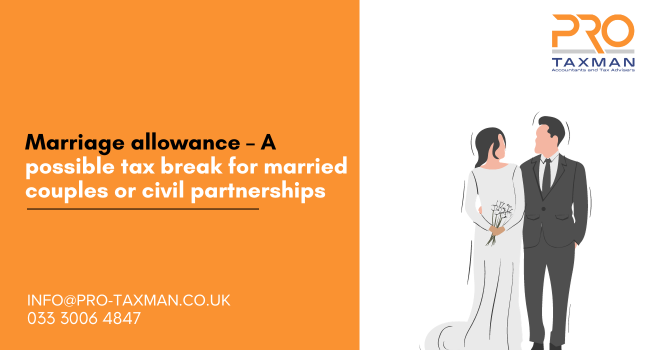Despite 4.2 million couples being eligible for the tax break, only 1.8 million are claiming the marriage allowance (MA) – a benefit worth £252 a year. The main reason for not claiming is probably because those eligible are either unaware of the allowance or, if they are aware of it, think they are not eligible.
For example, many commentators and HMRC’s website state that to claim one partner must have income less than the personal allowance of £12,570, but this is not what the legislation says. The qualification in the legislation is that neither person is a higher or additional rate taxpayer, not that one of them receives income below the personal allowance. That means that the transferor can have, say, £18,310 of income (comprising salary of £11,310, interest of £6,000 and £1,000 in dividends), make the transfer and still have no tax to pay.
The rules state that a claim can be made if all of the following apply:
- The couple must be married or in a civil partnerships when the transferor makes the application to transfer the allowance (there is no requirement for them to live together, such that it can still be transferred after separation or where one spouse has died).
- During the relevant tax year, the transferee is not liable to tax at a rate other than the basic rate, the dividend ordinary rate or the starting rate for savings.
- Neither person receives the married couple’s allowance (an allowance claimable where one person to the marriage was born before 6 April 1935).
Further, where a taxpayer has an extended basic rate band (e.g. as a result of gift aid payments or pension contributions), that extended basic rate band is used to determine whether the taxpayer is a basic rate taxpayer or not and therefore whether the MA may be claimed.
The MA is not an allowance as such, but a tax reducer enabling the reallocation of £1,260 of the annual personal allowance from one person in the marriage (or civil partnerships) to the other. The claim is for the whole £1,260 as a lower amount cannot be transferred, therefore the maximum tax reduction benefit is £252(£1,260 x 20%).
How to claim – complicated!
The claim is made by the person surrendering the allowance either by ticking a box on the tax return if registered for self-assessment or by completing the MA form MATCF and posting to the address on the form. The recipient cannot claim as there is nowhere on their tax return to indicate the transfer.
Enduring elections
MA elections need to be made each subsequent year if made on the self-assessment tax return and cannot become enduring. In comparison, elections made via completion of the form MATCF will become enduring and carried forward each year until cancelled. If an enduring election is in place and the transferor has income taxed under PAYE, the existence of an enduring MA claim can be determined by the tax code where a suffix ‘N’ indicates transfer to their spouse and suffix ‘M’ indicates receipt from their spouse.
Time limit
The general time limit for making any claim for repayment of overpaid tax is four years and refund claims under the MA are no different. If both partners have PAYE taxed income, the tax codes will be amended; the self-employed and others in self-assessment will have their final tax bill reduced. Otherwise, the refund will be by cheque. From February 2024 the refund can be made to a third party (e.g. an agent), if required.
Need professional accounting service or tax advice? Contact us to book a 15-min Free Consultation with us today.
To find out more please follow us on Facebook, Twitter, or LinkedIn. Feel free to contact us on 0333 006 4847 or request a call back by texting 075 6464 7474

